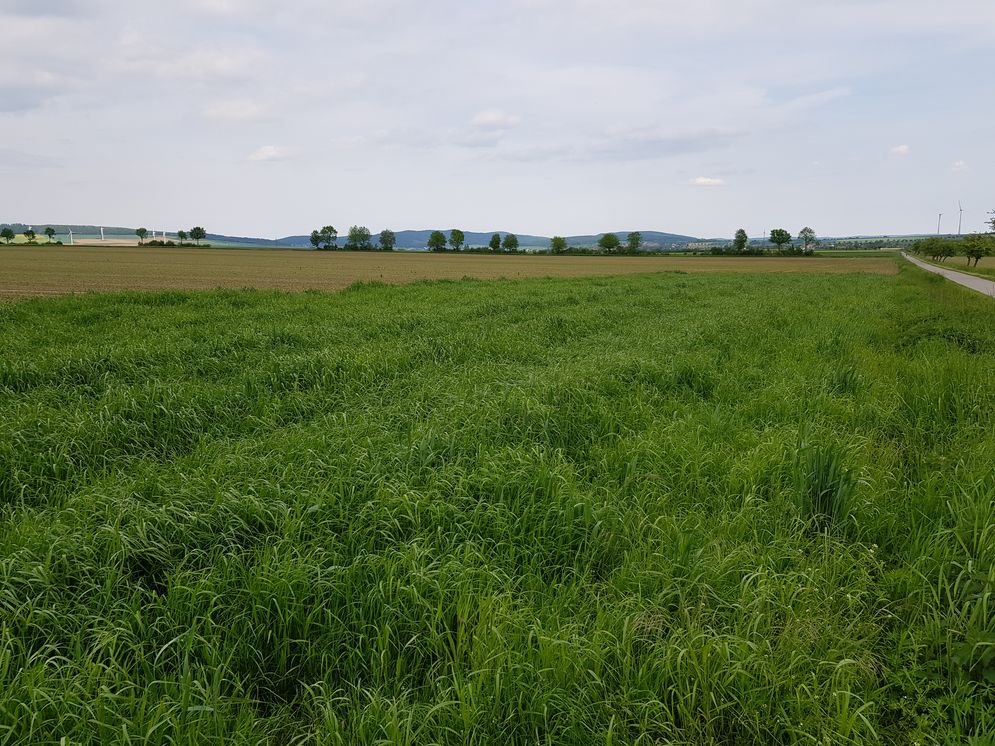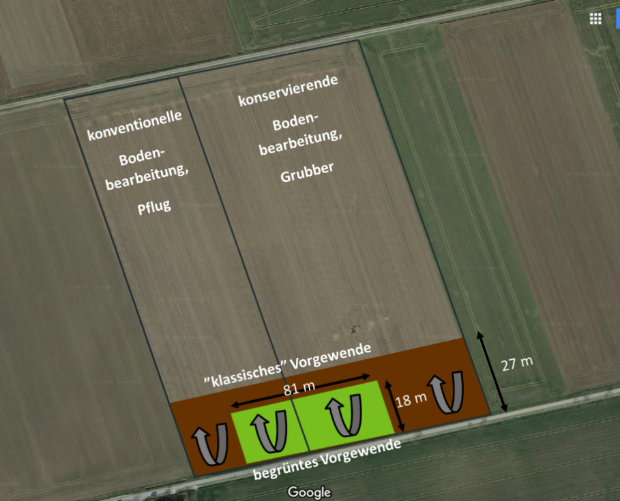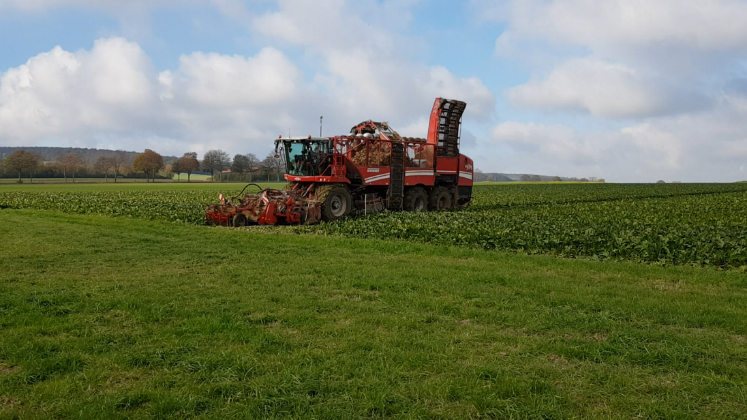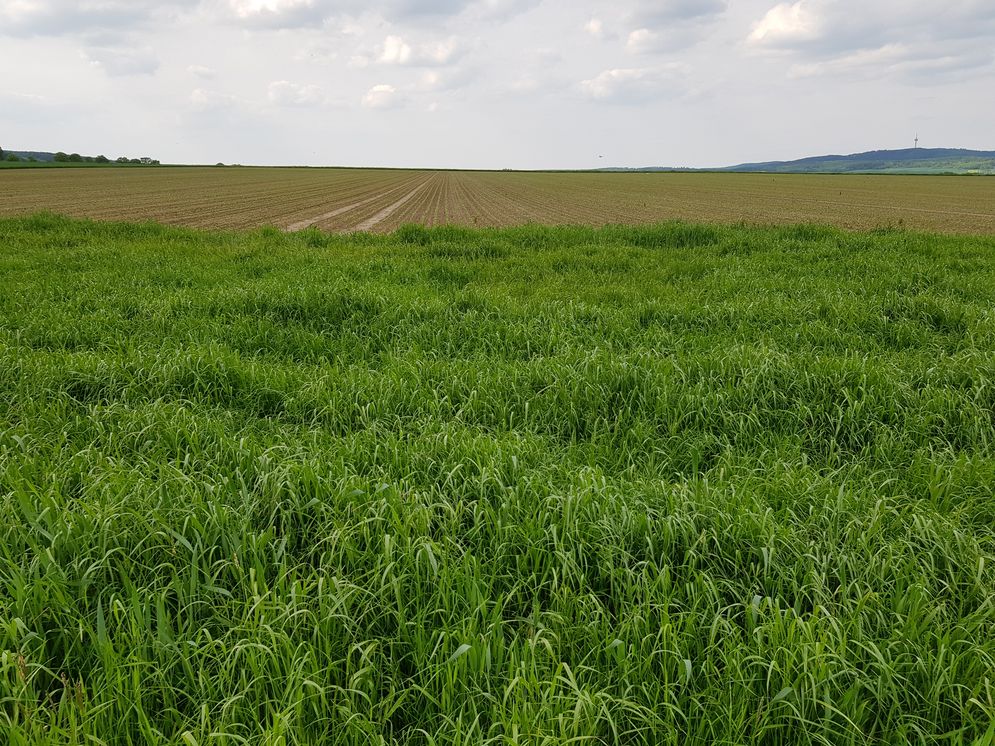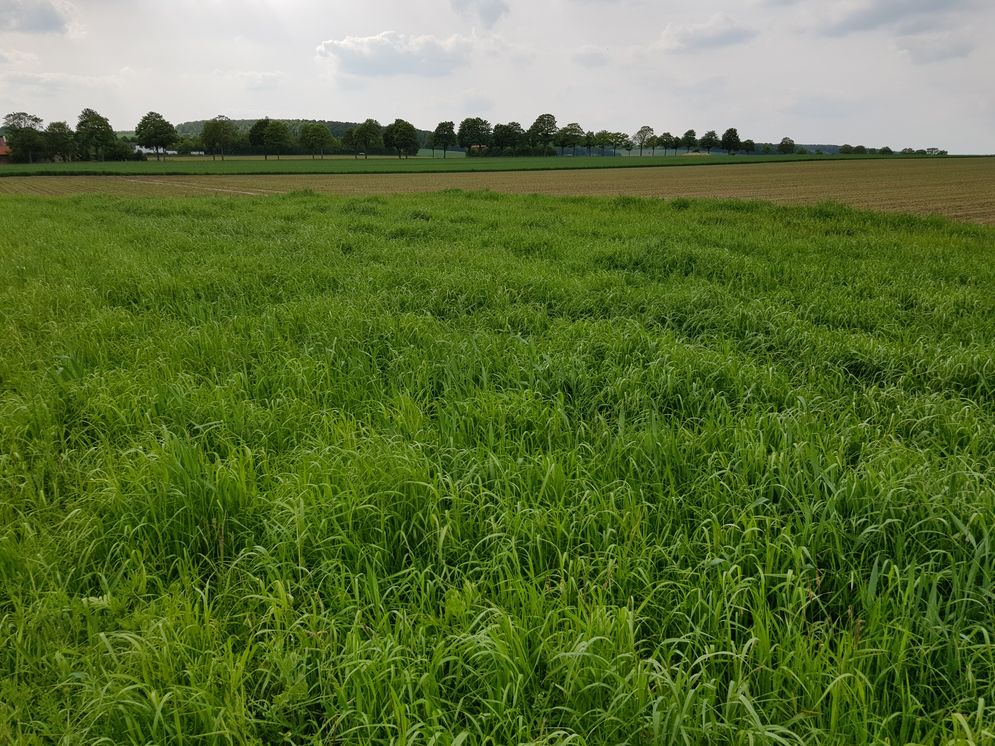Green headland
An innovative strategy for sustainable soil management in agriculture is the creation of a "green headland". The green part of the headland is used by agricultural machinery for turning.
This subproject is dedicated to innovative approaches and strategies for sustainable soil management. For this purpose, the experimental design of the greened headland was created as a new strategy for headland management. Part of the headland on test field 4 was planted with clover grass. This part serves as a measure to reduce the load inputs on the headland.
Headlands have the highest loads from field traffic, which considerably reduces the physical functions of the soil. By planting vegetation on the headland while reducing the size of the headland, it will be investigated to what extent soil functionality can be restored and how this affects plant yield.
The test field including the headland is divided into two tillage variants (conventional and conservation tillage). The green part of the headland (18 m) is narrower than the typical headland (27 m), as only the actual turning area is used as an area for turning of the machines when working the field. Furthermore, the part of the headland cultivated with clover grass should be kept as small as possible, as the area is not available as production area for the main crop.
At the beginning of the second project phase, scientists from the Thuenen Institute and the CAU carried out an initial soil sampling to investigate the initial soil condition of the headland. After three years the greened headland will be sampled again to compare the effects on soil physical properties and yield. The subdivision into conventional and conservation tillage allows, among other things, an economic comparison of the two tillage variants. The comparison with the results of the initial soil sampling allows to determine the effects of the measure on soil functional parameters or possible regeneration effects of former compaction effects in headlands. The influence of clover-grass growth in the green headland and the reduced load in the conventional headland are thus investigated under real farming conditions.
